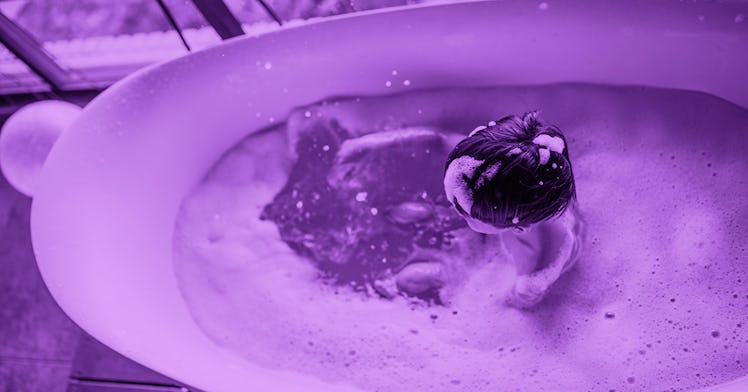How to Teach a Kid to Take a Bath
Kids will take the initiative in bathing – parents just need to make sure they do it safely.

Children let parents know when they are ready to wash themselves by loudly announcing that fact with the sort of certitude usually reserved for pointing out strangers physical flaws within earshot. The thing about the statement, “I can do it,” in regards to bathing is that it’s normally correct. Or, put slightly differently, it normally can be correct with a bit of guidance.
“If you’ve gotten into a routine with bathing over the months and years, they get into the groove and they naturally want to take more control,” says Shelly Flais, M.D., author of the American Pediatrics Academy’s Raising Twins. “Take advantage of that instinct and give them increasing steps. The biggest thing is to wash head to toe – face first, hands and feet, the rest of the body and then finishing up with diaper area and privates. They’ll get a sense of the pattern of bath time and naturally take the reins. I say roll with that, apply that, and be supportive of them. “
The pattern is not random. Once children start toilet training, they are still learning to wipe properly, so genitals need to be cleaned thoroughly – and last. Starting with the face, and then moving on to hands, feet, trunk, and legs, gives a child more time to practice before the dirtiest areas need to be cleaned. Not to mention that any washcloth or loofah used to scrub someone’s bottom has no business being used next on someone’s face.
Remembering the pattern is no guarantee that kids also grasp the finer points of bathing. You’ll need to spot check. “A lot of kiddos will glop product on, rinse it all off, and then step out. Don’t expect perfection right out of the gate,” explains Flais. “Sometimes as parents, we think we do a better job and it’s more efficient if we help, but if you don’t let the kids take the reins at some point they’ll never learn themselves.”
Each child is going to reach that phase at an individual pace. Comparing children to each other can make a fun project stressful, so parents should try to avoid that. Kids even occasionally regress, usually when there’s some stress in the household – moving to a new house, a parent transitioning to a new job, or leaving an old one, or a new baby. Regression is normal in these circumstances, but once things return to normal, or a new family pattern established, it’s important to encourage the child to exercise independence again.
Independence is not the same as leaving them unattended. The bathroom is one of the most dangerous places in the home, and parents need to be present. It only takes a few inches of water for top-heavy toddlers to have life-changing accidents in or around the bath.
“We talk about child-proofing and baby-proofing, but no amount of proofing can replace direct adult supervision,” says Flais. “I’m all about fostering independence and teaching those life skills and increasing steps in an age-appropriate way – but for kids who are four or younger, supervision is key.”
Washing every other day is sufficient, but Flais advocates for a daily bath. “It makes sure that those areas get rinsed off – little girls, in particular, can be prone to irritation in their privates, and there can be other skin issues,” she explains.
Eczema and dry skin in winter can be another reason for daily bathing. “Parents think that dry skin means the child should bathe less, but actually pediatric dermatologists encourage a daily bath,” Flais says. “It’s a hydrating step; if done properly; the water can’t be too hot, and it can’t be too long of a bath – that strips the skin of natural oils. Pat down to dry, not rub, and apply lotion or ointment to the dry patches right away to lock that moisture into the superficial skin layer.”
Done right, a daily bath can become a daily opportunity to talk about the day and for parent and child to reconnect with each other. That’s actually aided by a child being self-sufficient in the tub, which allows for an adult to focus on the conversation going on.
As for when the child can be truly independent in the bath, with minimal supervision, that depends on the individual child. But a good rule of thumb for parents is to think about their own childhoods, and what they were capable of at a given age. There’s also no reason to not check in until a child can articulate that they are embarrassed being interrupted in the altogether
This article was originally published on